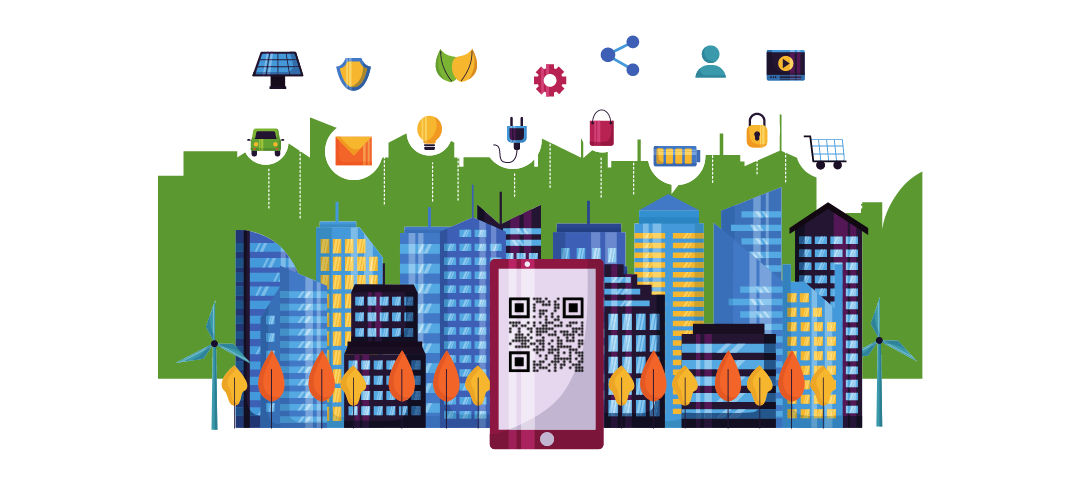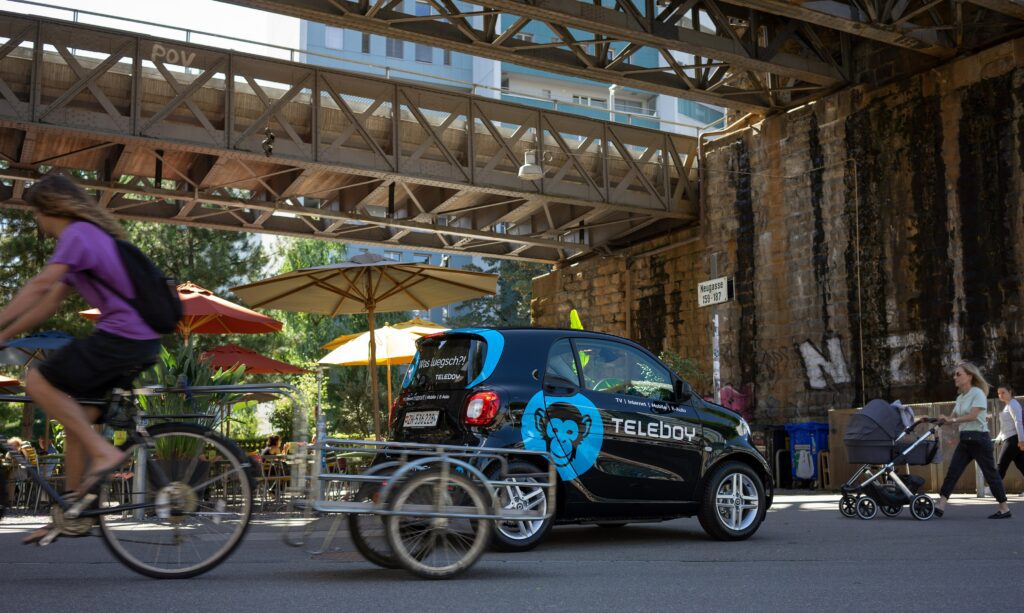
Imagine what life would be like if you live in a place that is technologically advanced in every corner. You may probably think how fast, convenient, and effortless things would be. Nowadays, most of the things we do like transportation, procurement, education, and the like can be done without the burden of waiting or scrambling for a slot. All you have to do is to make a booking through calls, SMS, or online means and you’re good to go.
As time passes by, technology begins to grow and proliferate. Some believe that it can pose a threat to humans as features such as Artificial Intelligence can replace them in performing tasks or doing work. However, rather than fear what the future holds, we can find ways to work with it and keep on thriving. In this article, let’s talk about QR Codes for smart cities.
Living and Working in a Smart City

Before we delve into the depths of a futuristic city, let us first understand what a Smart City is, and how we can live and work our way around it.
First and foremost, what is a smart city? According to an article in TWI-Global, a smart city uses information and communication technology (ICT) to improve operational efficiency, share information with the public and provide a better quality of government service and citizen welfare.
A smart city has access to modern technology’s features such as high speed internet, smart home, sustainable energy, intelligent transportation (e.g. e-vehicles), advanced medical facilities, sustainable development (waste management systems, eco-friendly buildings, etc), and effective and efficient government (fast and easy access to information and services, communication and feedback-giving). It also promotes a connected community through a variety of activities that encourage socialization, recreation, and the like.
QR Codes for Smart Cities – Making Smarter Cities!
Want to make smart cities even smarter? Add QR Codes to the mix!
QR Codes are small, square-shaped barcodes that can hold up to more than 7,000 characters. This enables the code to store a huge amount of information. Unlike the standard barcodes, you can scan QR Codes in multiple dimensions.
These codes were conceptualized in the mid-1990s by an engineer of Denso Wave, a Toyota subsidiary. The need for a bigger information storage system paved the way for the creation of QR Codes.
It doesn’t require a special skill to access information or perform other tasks with QR Codes. If you have a functioning scanner on your smartphone, then that should do the trick.
How can something small and simple do great feats for a smart city? Let us count the ways:
Transportation
You can place QR Codes on public transportation like bus stops, train stations, airports, piers, and the like. These will provide real-time information about travel schedules and routes. These can also be used for streamlining payments and engaging customers.
Waste Management
It is important for a city to manage waste efficiently. How can QR Codes help? When it is placed on trash bins, the city officials can easily track and monitor waste disposal and collection.
Emergency Services
Various emergency contacts can also be stored in QR Codes. They enable users to easily call for help in case of untoward or unexpected incidents.
Energy Management
Smart cities can also place QR Codes in energy meters and energy efficient buildings. These can provide real-time information on energy usage and make it easy for city officials to monitor and manage energy consumption with more efficiency.
Public WiFi
What is a smart city without public internet access? Placing QR Codes for wireless fidelity on areas accessible to the public will help in various ways: easy information access and sharing, online classes anywhere and anytime, virtual conferences, and the like.
Best Practices for Designing QR Codes for Smart Cities
So, are you planning to incorporate QR Codes into your smart city? Here are ways to get started.
- CAREFUL PLANNING. What type of QR Codes are you using? What purpose shall it serve? Is it going to be static or dynamic? Where are you going to put it? How are you going to maintain it and track its progress?
- ONE CODE, ONE PURPOSE. Create only one QR Code for a single purpose to avoid confusing and misleading the users.
- CREATE A QR CODE. There are many websites that host the creation of QR Codes, one of which is qr-cloud.com. It is a user-friendly site that offers a variety of features. You can choose any type of code that will suit your purpose, and can play with a variety of colors, shapes, and other designs.
- CREATE A CALL-TO-ACTION. QR users need simple instructions to follow. If your QR Code’s purpose is to issue a memorandum or a publication material, you can put the instruction “Scan to download” so that the users will know what to do with the QR Codes.
- SCAN TEST YOUR CODES. Before you place your QR Codes in public places, make sure they are accessible. Give them a test scan using a legitimate and functioning QR scanner. If the QR Code works, then you’re good to go. If it doesn’t, then you’ll need to tweak it up a little bit.
- PUT THEM IN EASILY ACCESSIBLE PLACES. To ensure that the QR Codes are functioning well, you have to place it where the public can easily find it.
- TEACH EMPLOYEES, CITY OFFICIALS, AND THE PUBLIC TO USE IT. QR Codes cannot properly function if no one knows how to use them. You can provide a video or any other material to help people how to use it. This will be beneficial especially for people with disabilities.
Challenges and solutions in integrating QR Codes in Smart City planning
Solution: Before you implement QR Code in a smart city, make sure to work with QR Code technology experts to make sure that it will be compatible with the existing system, as well as the devices that will be used for scanning.
Solution: The cities can look for cost-effective solutions like open-source QR Code systems to avoid expensive implementation of the codes.
Solution: It will be secure by implementing security measures like encryption and secure data storage.
Solution: With proper education (particularly materials that the users can easily follow), they can easily adopt the use of QR Codes.
Solution: Through regular monitoring and maintenance of the system, the QR Codes can surely continue to work properly and provide the intended benefits.
Conclusion
The future lies on QR Codes. Their capacity to hold large amounts of information will make it possible for any city to automate their services, therefore providing quality services to its people. Want to make your smart city smarter? It can be achieved with QR Codes!
